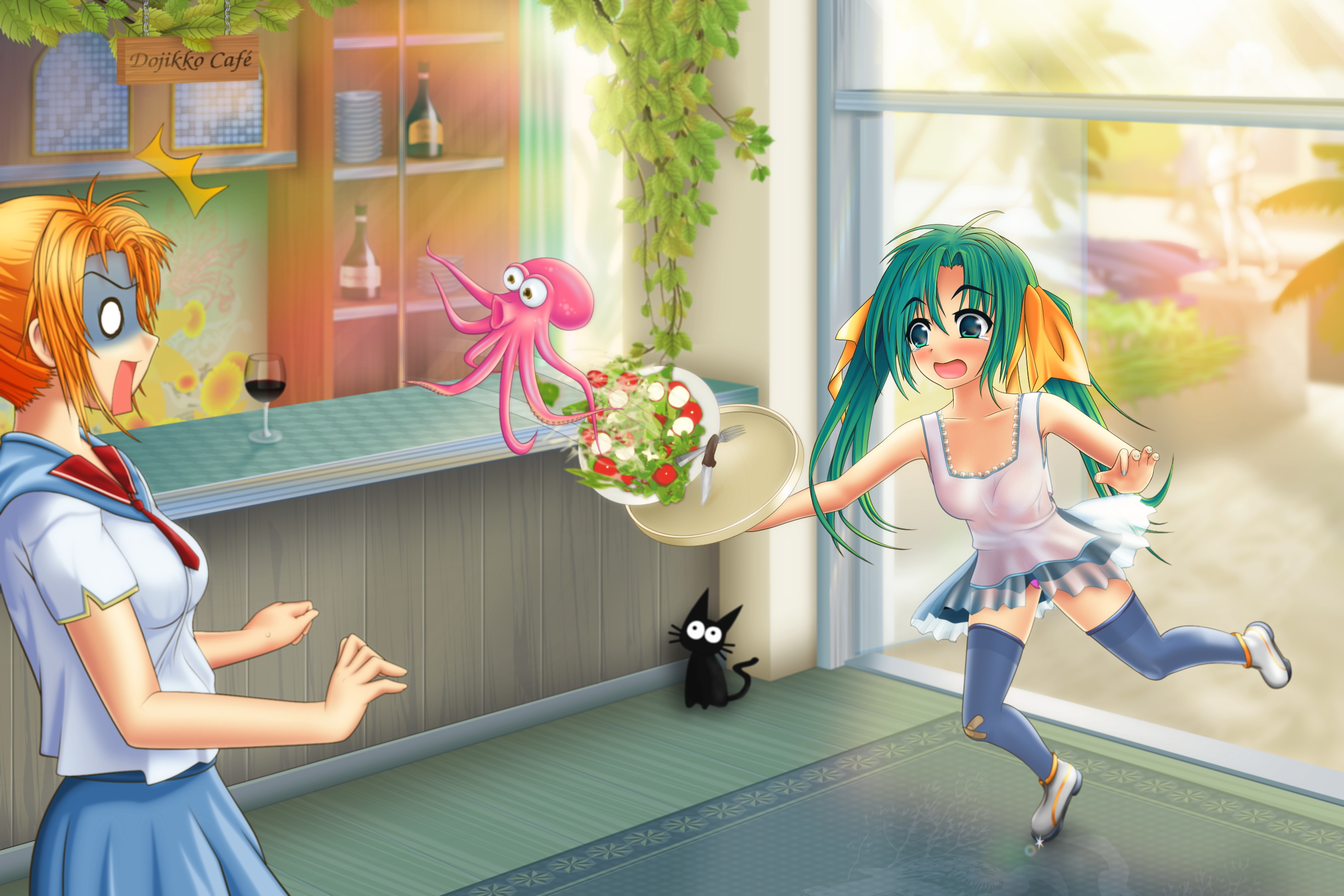Dojikko on:
[Wikipedia]
[Google]
[Amazon]

 A , in
A , in

 A , in
A , in otaku
is a Japanese word that describes people with consuming interests, particularly in anime, manga, video games, or computers. Its contemporary use originated with a 1983 essay by Akio Nakamori in ''Manga Burikko''. may be used as a pejorativ ...
culture terminology, refers to an extremely clumsy female (''doji'' means "blunder" in Japanese). The type is used as a stock character in Japanese light novel
A light novel (, Hepburn: ''raito noberu'') is a style of young adult novel primarily targeting high school and middle school students. The term "light novel" is a ''wasei-eigo'', or a Japanese term formed from words in the English languag ...
s, anime
is Traditional animation, hand-drawn and computer animation, computer-generated animation originating from Japan. Outside of Japan and in English, ''anime'' refers specifically to animation produced in Japan. However, in Japan and in Japane ...
, and manga
Manga (Japanese: 漫画 ) are comics or graphic novels originating from Japan. Most manga conform to a style developed in Japan in the late 19th century, and the form has a long prehistory in earlier Japanese art. The term ''manga'' is u ...
.
The word can also be written as "". Spelled like this, it can refer to male characters as well.
Generally, the girl is pretty and cute or so sweet and innocent that readers are expected to like her. She repeatedly fails in everyday house and school activities, like housework, sport competitions, even simply walking. She frequently falls, runs into things, or trips over the lowest obstacles. Even though she is annoyed at her misfortunes, a ''dojikko'' always shows her good side and regrets messing things up. Examples of ''dojikko'' behaviour include slipping on stairs, knocking over a drink, breaking a dish while serving customers, and other such slapstick
Slapstick is a style of humor involving exaggerated physical activity that exceeds the boundaries of normal physical comedy. Slapstick may involve both intentional violence and violence by mishap, often resulting from inept use of props such a ...
.
Although in anime
is Traditional animation, hand-drawn and computer animation, computer-generated animation originating from Japan. Outside of Japan and in English, ''anime'' refers specifically to animation produced in Japan. However, in Japan and in Japane ...
, computer games and other works of the otaku subculture, cute clumsiness is one of the attributes of ''moe
Moe, MOE, MoE or m.o.e. may refer to:
In arts and entertainment Characters
* Moe Szyslak, from the animated television show ''The Simpsons''
* Moe, leader of The Three Stooges, played by Moe Howard
* Moe Higurashi, supporting character in ''Yash ...
'' characters designed for male audiences to fall in love with, main protagonists of ''shōjo'' manga are also often ''dojikko''; examples being Hiromi Oka in ''Aim for the Ace!
''Aim for the Ace!'', known in Japan as , is a manga series written and illustrated by Sumika Yamamoto. The series tells the story of Hiromi Oka, a high school student who wants to become a professional tennis player as she struggles ag ...
'' and Usagi Tsukino
, better known as , is a Japanese superheroine and the main protagonist and title character of the ''Sailor Moon'' manga series written by Naoko Takeuchi. She is introduced in chapter #1, "Usagi – Sailor Moon" (originally published in Japan' ...
in ''Sailor Moon
is a Japanese manga series written and illustrated by Naoko Takeuchi. It was originally serialized in Kodansha's ''shōjo'' manga magazine ''Nakayoshi'' from 1991 to 1997; the 52 individual chapters were published in 18 volumes. The seri ...
''.
Attraction towards ''dojikko'' characters is called .
References
Anime and manga terminology Female stock characters in anime and manga {{anime-char-stub